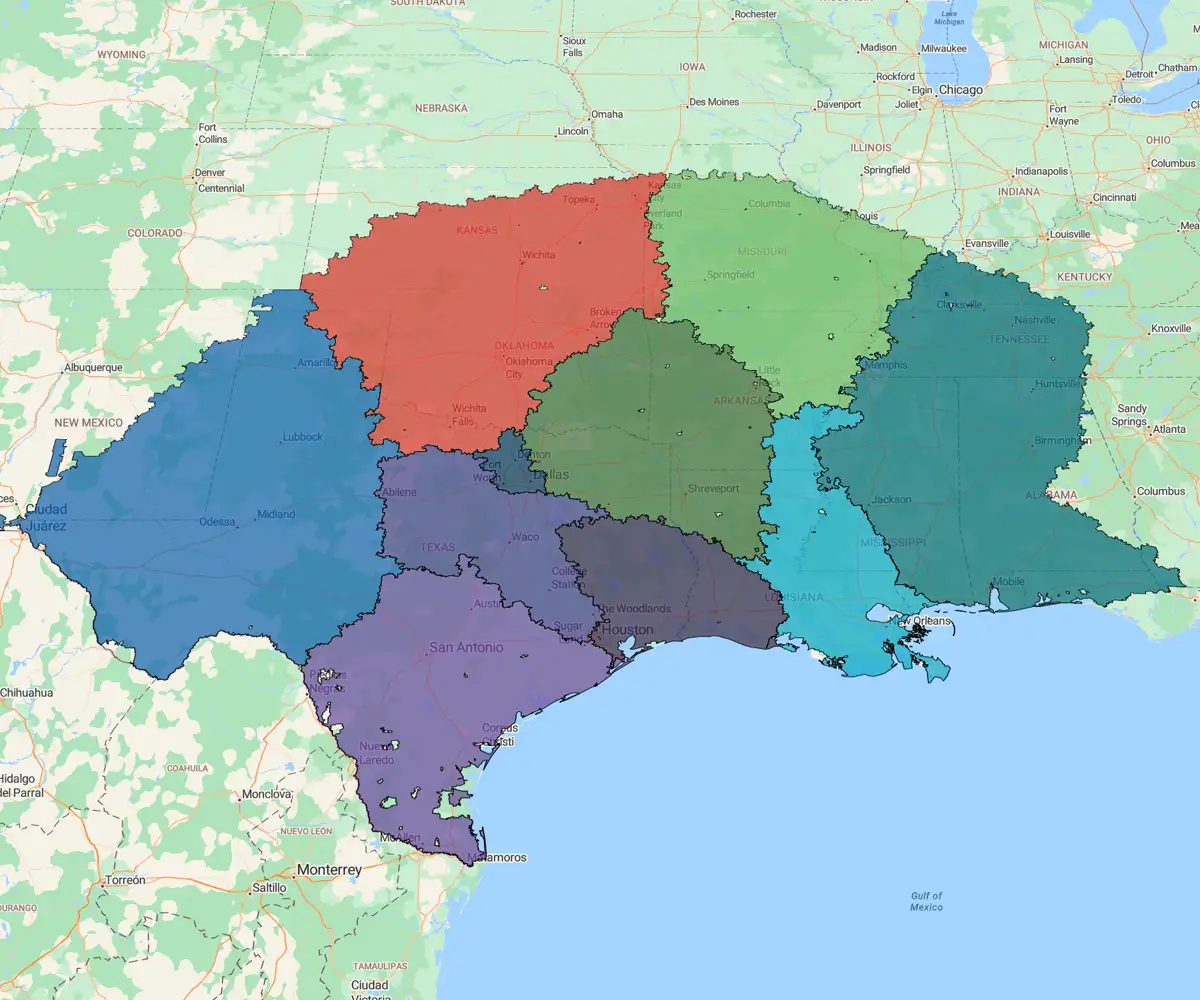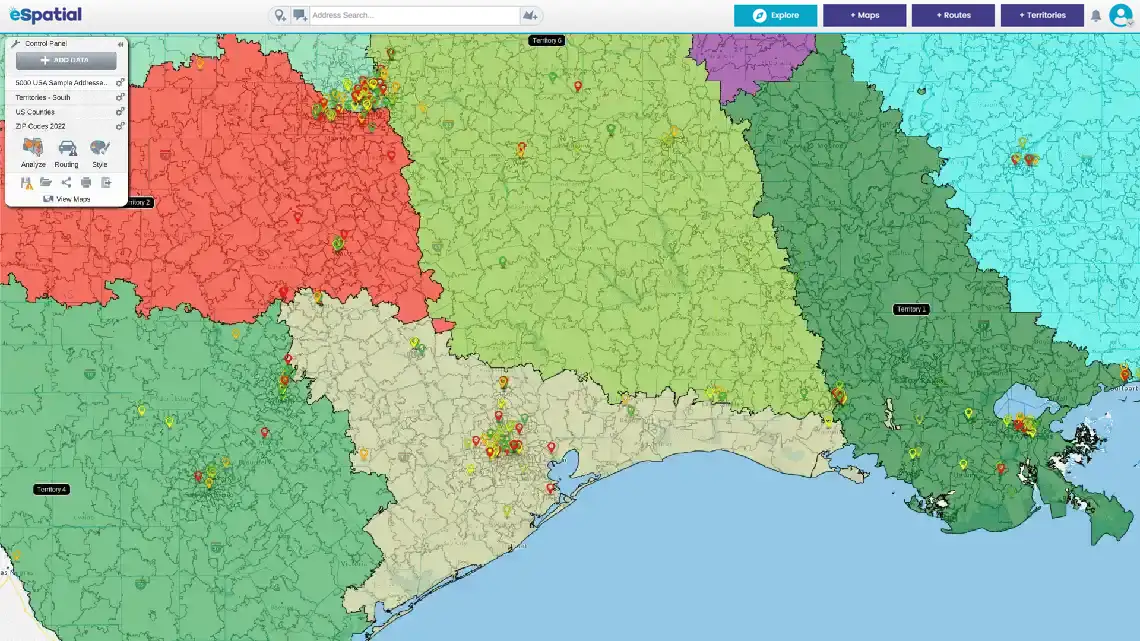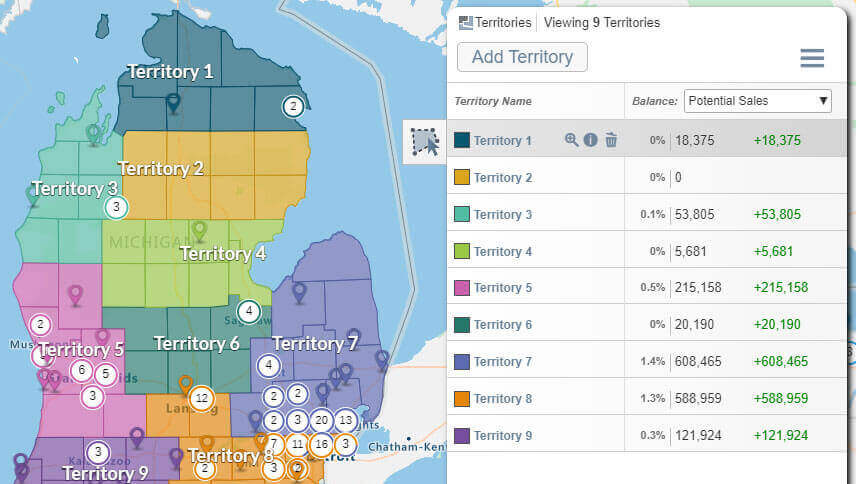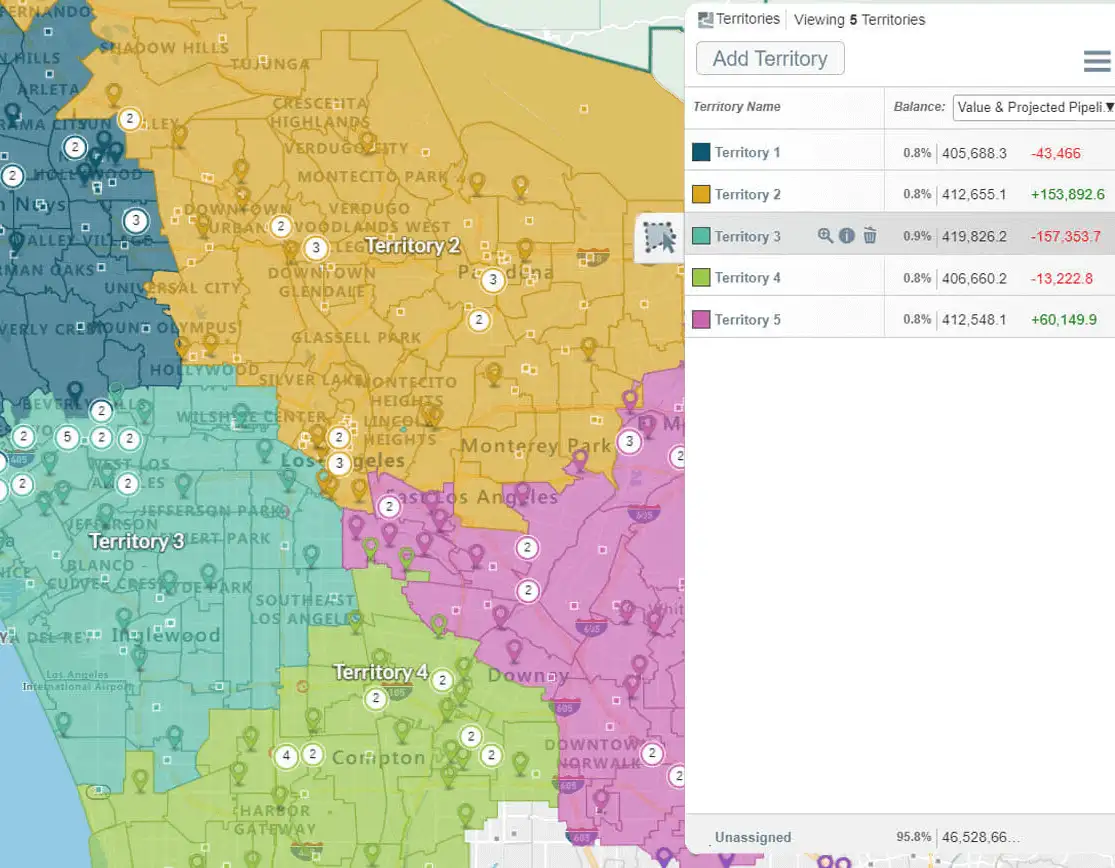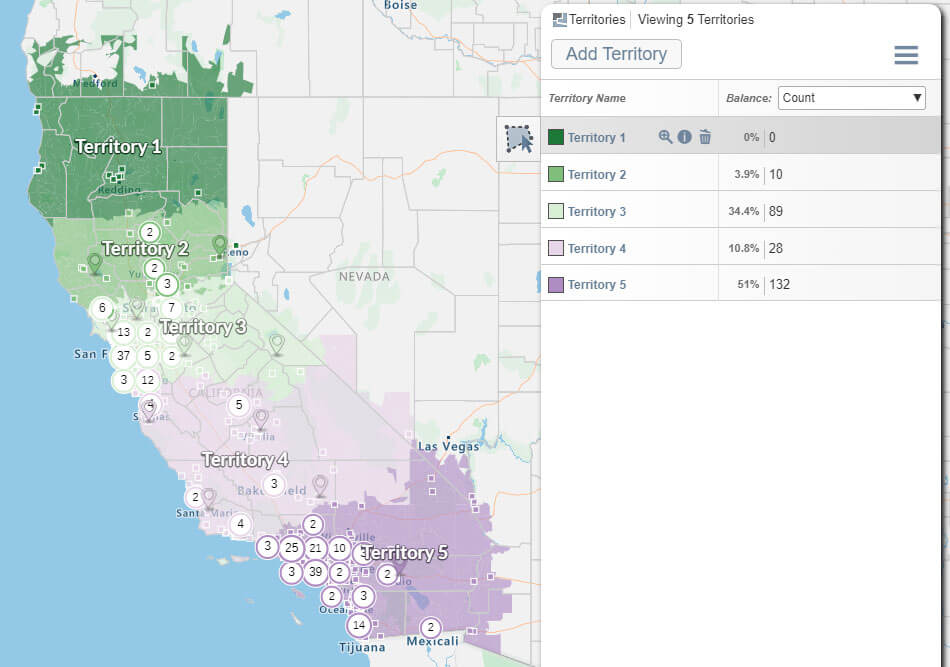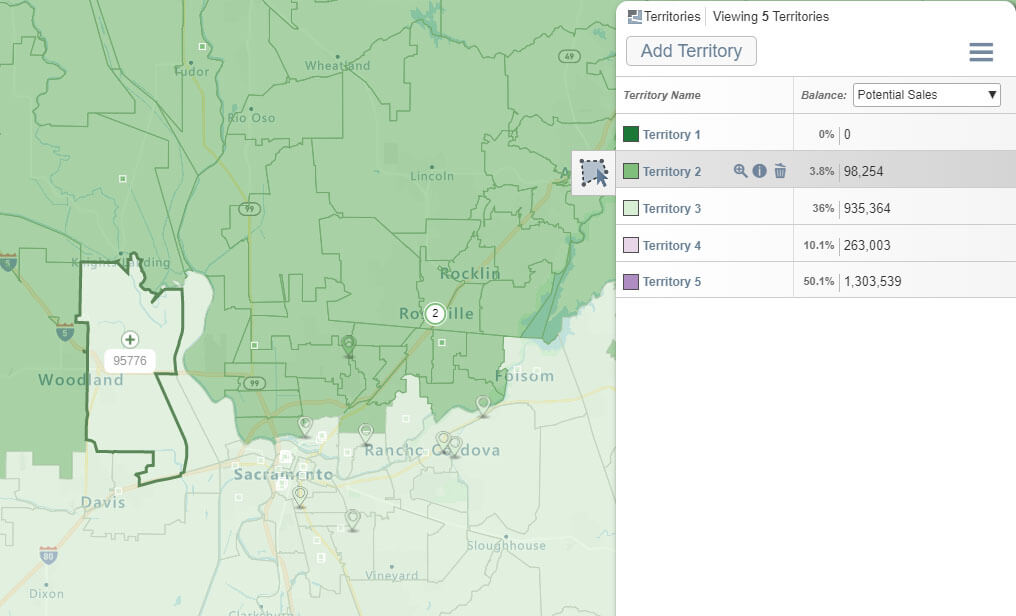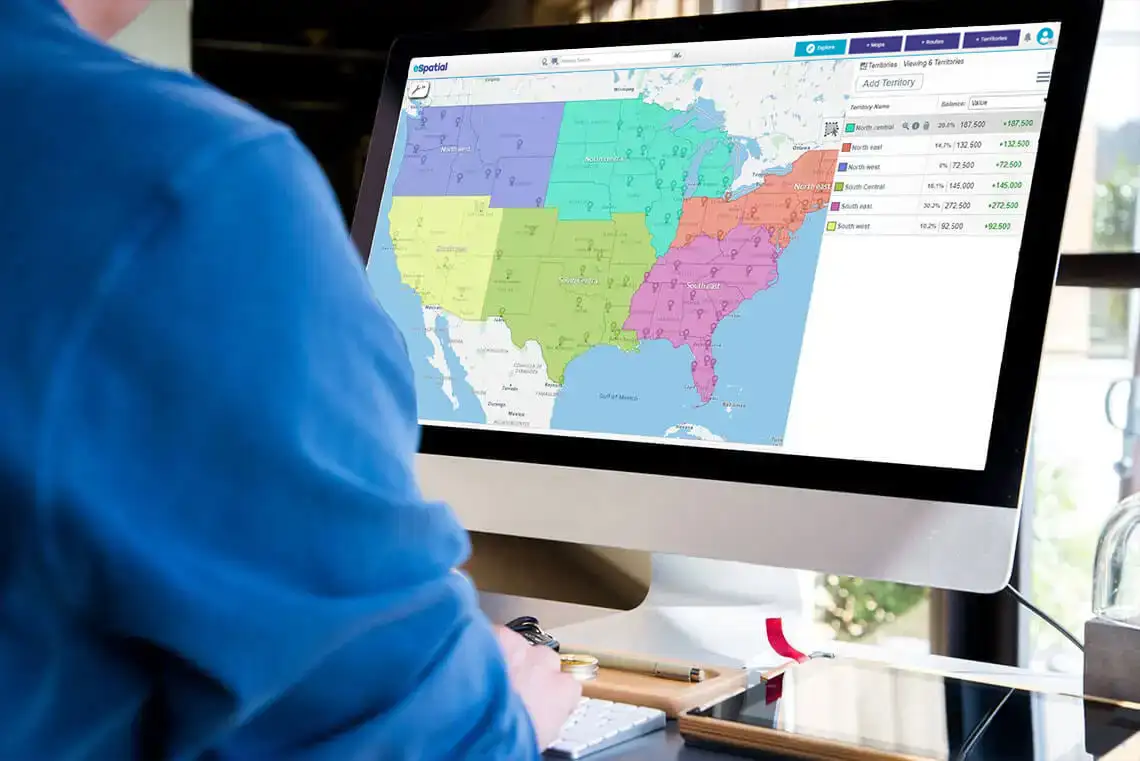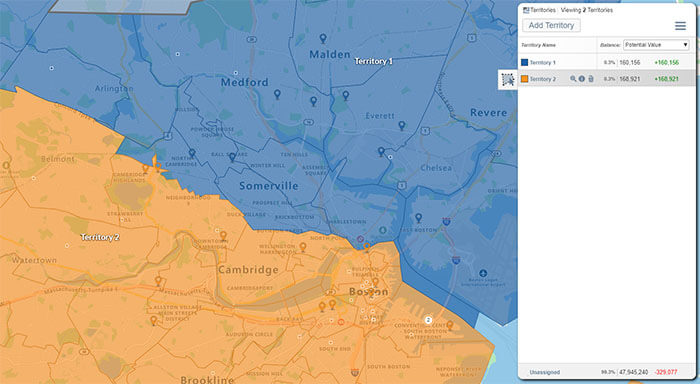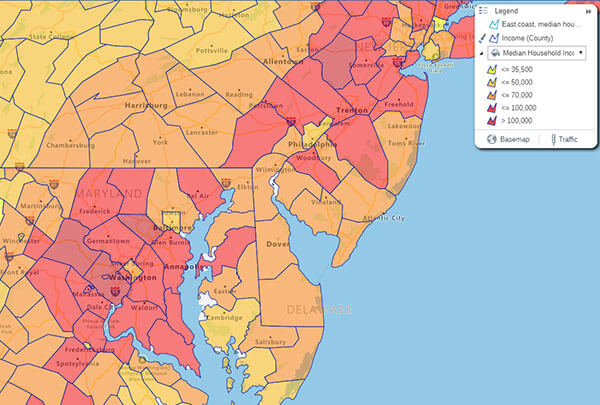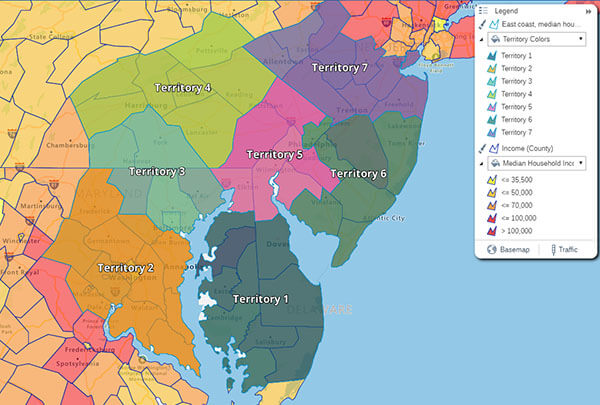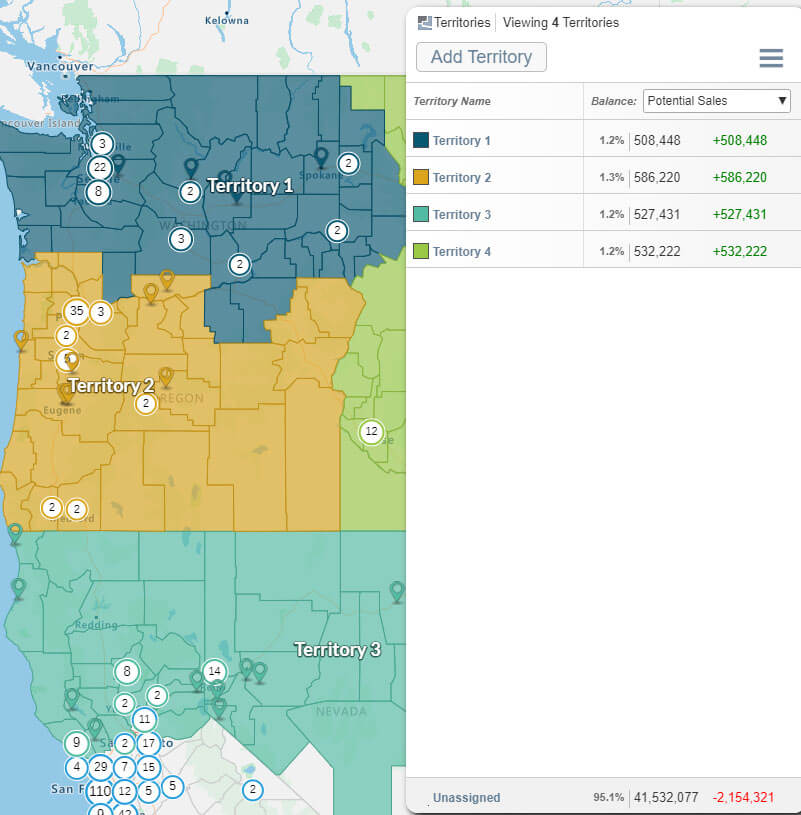2. Choose a Tool That Suits You
Whether you're creating territories for the first time or looking for a better system, you'll need to choose a territory management tool. In the past, many companies laid out territories using maps and markers. Modern methods make the process much easier, assist with reporting, allow you to share the details with your team, and allow for regular updating.
Smaller companies often start by planning territories with a simple column in a spreadsheet. This can do the trick in the very early stages, but quickly becomes difficult to manage. Having thousands of lines of data in a spreadsheet also makes it difficult to discover any insights about performance. Visualizing your data makes it easier to understand for team members, reporting and identifying trends.
Professional mapping software allows you to easily visualize your territories. This makes it easy to understand the mountains of information contained in your spreadsheet and helps clarify each team member's responsibilities. Above all, easy territory creation and management is key, otherwise your new solution may not be used to the fullest.

